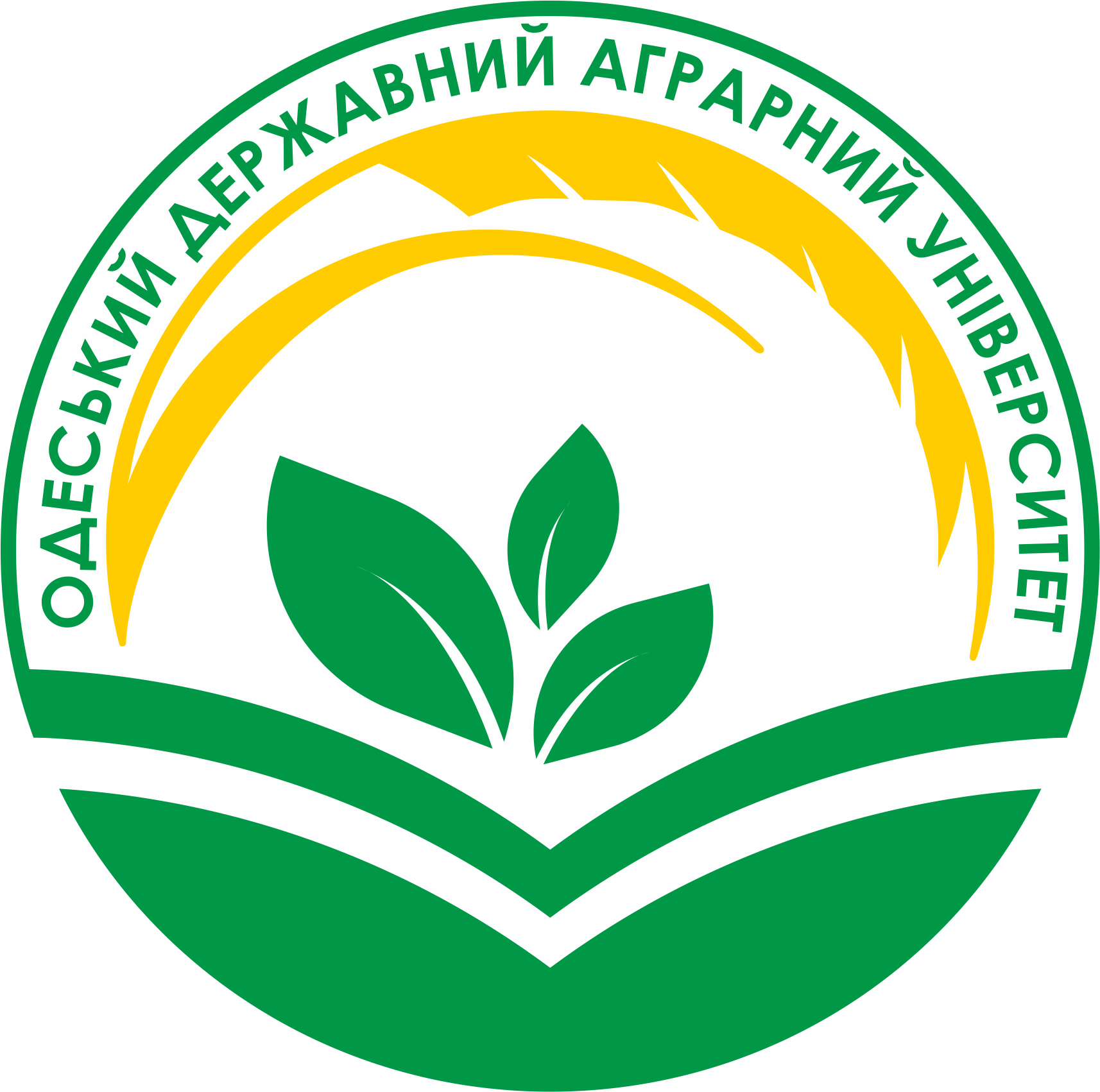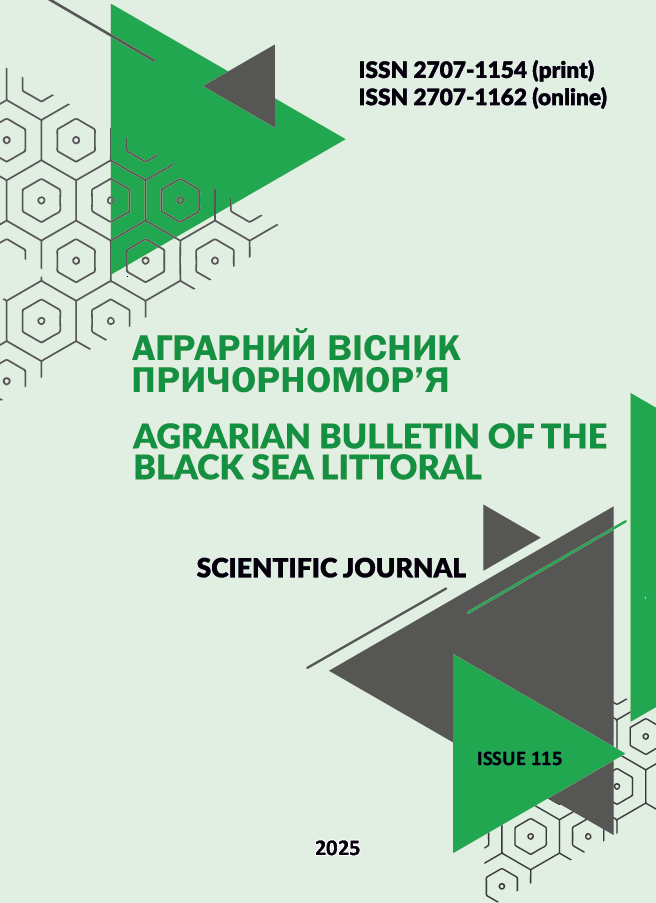РЕФЕРЕНТНИЙ АНАЛІЗ ШОВНОГО МАТЕРІАЛУ «PWL» ТА ШОВКУ ПРИ ШКІРНО-М’ЯЗОВИХ З’ЄДНАННЯХ
DOI:
https://doi.org/10.37000/abbsl.2025.115.04Ключові слова:
хірургія, операційні рани, загоєння ран, полівалеролактон.Анотація
У представленій статті наведено результати дослідження, що присвячене порівнянню ефективності двох типів шовних матеріалів - полімерного матеріалу PWL (полівалеролактон, монофіламент), розробленого НВО «Біополімер», м. Полтава, та традиційного шовку - при ушиванні шкірно-м’язових ран, зокрема при операціях з доступом через серединний розріз черевної стінки. Під час проведення хірургічного втручання особливу увагу було приділено характеру загоєння післяопераційної рани. Встановлено, що регенерація тканин шляхом первинного натягу відбувалась значно ефективніше у групі тварин, яким для ушивання було використано нитку PWL. Зокрема, у 90% випадків у цій групі спостерігалося нормальне загоєння без ускладнень. Натомість при застосуванні комбінації кетгуту та шовку показник загоєння первинним натягом становив лише 70%. Це свідчить про вищу біологічну інертність полімерного матеріалу PWL, що зменшує імовірність виникнення запальних ускладнень. Частота виявлення лігатурних заростків (ознака реакції організму на сторонній матеріал) при застосуванні традиційного шовку була вдвічі вищою, ніж при використанні PWL. У 30% тварин, яким ушивання проводилось шовком і кетгутом, спостерігалися серйозні ускладнення, зокрема нагноєння швів та неспроможність загоєння, що не реєструвались у випадку використання PWL. Дослідження також показало, що вже з другого післяопераційного дня у тварин, яким було проведено ушивання рани ниткою PWL, значно зменшувалась ексудація з рани. Це зумовлювало зникнення запального набряку і сприяло швидшому зростанню тканинного дефекту. Менш виражена місцева реакція на шовний матеріал у свою чергу сприяла загальному поліпшенню післяопераційного періоду.
Таким чином, отримані результати доводять, що вибір шовного матеріалу має принципове значення для перебігу післяопераційного періоду та кінцевого результату хірургічного втручання. PWL є перспективною альтернативою традиційним шовним матеріалам, оскільки забезпечує меншу кількість ускладнень, пришвидшує процес загоєння та демонструє високу біосумісність із тканинами організму.
Посилання
Alves P., Lima A., Santos C. Advances in synthetic suture materials for tissue repair International Journal of Biomaterials. 2020. DOI: https://doi.org/10.1155/2020/8832947.
Avoine X., Lussier B., Brailovski V., Inaekyan K., Beauchamp G. Evaluation of the effect of 4 types of knots on the mechanical properties of 4 types of suture material used in small animal practice. Canadian Journal of Veterinary Research. 2016. Vol. 80, № 2. P. 162–170.
Boone S. S., Hernandez S. M., Divers S. J. Evaluation of four suture materials for surgical incision closure in Siberian sturgeon. Transactions of the American Fisheries Society. 2013. Vol. 142, № 3. P. 649–659. DOI: https://doi.org/10.1080/00028487.2013.763857.
Cosford K., Hoessler C., Shmon C. Evaluation of a first-year veterinary surgical skills laboratory: A retrospective review. Journal of Veterinary Medical Education. 2019. Vol. 46, № 4. P. 423–428. DOI: https://doi.org/10.3138/jvme.1017-143r1.
Costanzo G., Linta N., Diana A. Case report: Ultrasonographic assessment of early leakage in intestinal sutures in dogs. Frontiers in Veterinary Science. 2023. Vol. 10. DOI: https://doi.org/10.3389/fvets.2023.1094287.
Etter S. W., Ragetly G. R., Schaeffer D. J. Effect of using triclosan-impregnated suture for incisional closure on surgical site infection and inflammation following tibial plateau leveling osteotomy in dogs. Journal of the American Veterinary Medical Association. 2013. Vol. 242, № 3. P. 355–358. – DOI: https://doi.org/10.2460/javma.242.3.355.
Gaber M., Abdel-Wahed R. Suture coding: A novel educational guide for suture patterns. Journal of Surgical Education. 2015. Vol. 72, № 5. P. 995–1004. DOI: https://doi.org/10.1016/j.jsurg.2015.04.005.
Ivanov I. I. Biocompatibility and effectiveness of modern suture materials in veterinary surgical practice. Veterinary Surgery and Biotechnology. 2022. Vol. 7, № 2. P. 45–51. DOI: https://doi.org/10.32748/vsb2022.02.045. – (in Ukrainian).
König L., Klopfleisch R., Gruber A. D. Prevalence of biofilms on surgical suture segments in wounds of dogs, cats, and horses. Veterinary Pathology. 2015. Vol. 52, № 2. P. 295–297. DOI: https://doi.org/10.1177/0300985814535609.
S., Thomas L. Microbial colonization of surgical sutures: A comparison of silk and modern polymer-based materials. Surgical Infections. 2022. Vol. 23, № 1. P. 22–28. DOI: https://doi.org/10.1089/sur.2022.0034.
Kuzmenko M. P., Chernenko T. S. Morphological evaluation of tissue reaction to synthetic monofilament sutures in experimental animals. Scientific Bulletin of Poltava State Agrarian Academy. 2020. № 4. P. 79–85. DOI: https://doi.org/10.31210/2415-8240-2020-4-79-85. (in Ukrainian).
Lee J., Patel D. Biocompatibility and long-term performance of absorbable and non-absorbable sutures in dermal-muscular closures. Clinical Surgical Science. 2024. Vol. 16, № 1. P. 14–21. DOI: https://doi.org/10.1007/s12012-024-00298-9.
Li S., Guo Y. Z., Zhou Z. L., et al. Biomechanical and tissue reaction: The effects of varying sutures size on canine abdominal wall stitching. Frontiers in Veterinary Science. 2023. Vol. 10. DOI: https://doi.org/10.3389/fvets.2023.1254998.
Lopez J. M., Garcia R., El-Amin S. Histomorphometric comparison of absorbable and non-absorbable sutures in muscle-skin junctions. Surgical Science. 2020. Vol. 11, № 6. P. 278–285. DOI: https://doi.org/10.4236/ss.2020.116031.
Lutchman C. R., Leung L. H., Moineddin R., Chew H. F. Comparison of tensile strength of slip knots with that of 3-1-1 knots using 10-0 nylon sutures . Cornea. 2014. Vol. 33, № 4. – P. 414–418. DOI: https://doi.org/10.1097/ICO.0000000000000063.
Mankin K. M. T., Cohen N. D. Randomized, controlled clinical trial to assess the effect of antimicrobial-impregnated suture on the incidence of surgical site infections in dogs and cats. Journal of the American Veterinary Medical Association. 2020. Vol. 257, № 1. P. 62–69. DOI: https://doi.org/10.2460/javma.257.1.62.
Martins P. A., dos Santos L., Ribeiro F. Clinical outcomes of antibacterial-coated synthetic sutures in high-risk surgical wounds. Wound Repair and Regeneration. 2022. Vol. 30, № 4. P. 487–494. DOI: https://doi.org/10.1111/wrr.12980.
Marturello D. M., McFadden M. S., Bennett R. A., Ragetly G. R., Horn G. Knot security and tensile strength of suture materials // Veterinary Surgery. 2014. Vol. 43, № 1. P. 73–79. DOI: https://doi.org/10.1111/j.1532-950X.2013.12076.x.
Mohammed A., Rabo J. S., Ibrahim A. A. Reaction of skin to suture materials in Borno white goats. Small Ruminant Research. 1995. Vol. 16, № 2. P. 191–194. DOI: https://doi.org/10.1016/0921-4488(95)00630-6.
T., Brown R., Li Y. Antimicrobial-coated sutures: A review of clinical outcomes and infection prevention. Journal of Surgical Research. 2023. Vol. 279. P. 112–119. DOI: https://doi.org/10.1016/j.jss.2023.03.012.
Pascoletti G., Pressanto M. C., Zanetti E. M. Tensile behavior of surgical sutures: An experimental study. Journal of the Mechanical Behavior of Biomedical Materials. 2020. Vol. 109. – 103803. DOI: https://doi.org/10.1016/j.jmbbm.2020.103803.
Regier P. J., Smeak D. D., McGilvray K. C. Ex vivo comparison of intradermal closures with conventional monofilament suture vs unidirectional barbed suture in dogs. Veterinary Surgery. 2023. Vol. 48, № 8. P. 1399–1405. DOI: https://doi.org/10.1111/vsu.13271.
Rodriguez J., Wang F., Cooper M. Tensile strength and tissue response of new-generation polyester sutures. Journal of Biomedical Materials Research Part B: Applied Biomaterials. 2021. Vol. 109, № 4. P. 841–848. DOI: https://doi.org/10.1002/jbm.b.34890.
Shaver S. L., Yamada N., Hofmeister E. H. Retention of basic suturing skills with brief or extended practice in veterinary students. Veterinary Surgery. 2020. Vol. 49, № 6. P. 1239–1245.
Shevchenko O. V., Hrytsenko L. M. Comparative characteristics of silk and synthetic absorbable sutures in postoperative wound healing in pigs. Ukrainian Journal of Veterinary Sciences. 2021. Vol. 27, № 4. P. 112–118. DOI: https://doi.org/10.32528/ujvs.27.4.112. (in Ukrainian).
Shivley J. M., Brookshire W. C., Woodruff K. A. A randomized trial to compare smooth monofilament suture vs. barbed suture using the three-layer continuous closure technique in canine ovariohysterectomy. Frontiers in Veterinary Science. 2024. Vol. 11. DOI: https://doi.org/10.3389/fvets.2024.1365213.
Singh H., Gupta R., Mehta A. Comparison of suture materials in soft tissue surgery: A review. Journal of Clinical and Experimental Surgery. 2021. Vol. 9, № 2. P. 102–107. DOI: https://doi.org/10.1016/j.jces.2021.02.008.
Soufdoost R. S., Mosaddad S. A., Barkhordari A., et al. Surgical suture assembled with tadalafil/polycaprolactone drug delivery for vascular stimulation around wound: Validated in a preclinical model. Biointerface Research in Applied Chemistry. 2020. Vol. 10, № 5. P. 6317–6327. DOI: https://doi.org/10.33263/BRIAC105.63176327.
Taysi A. E., Ercal P., Sismanoglu S. Comparison between tensile characteristics of various suture materials with two suture techniques: An in vitro study // Clinical Oral Investigations. 2021. Vol. 25, № 11. P. 6393–6401. DOI: https://doi.org/10.1007/s00784-021-03943-3.
Tzimtzimis E., Papazoglou L. Properties of sutures used in veterinary surgery. Journal of the Hellenic Veterinary Medical Society. 2012. Vol. 63, № 4. P. 301–313.
Villagomez A., Borja T., Caicedo A., et al. Histological and microbiological evaluation of surgical wound closure in mouse skin with cyanoacrylate (Histoacryl®) in comparison to poliglecaprone (Monocryl®) traditional suture // Veterinary and Animal Science. 2021. Vol. 13. DOI: https://doi.org/10.1016/j.vas.2021.100180.
Whyte M. A., Upchurch D. A., Stroda S. Axial twisting within an ending loop of a continuous suture pattern affects the biomechanical properties of knots of certain suture sizes and types. American Journal of Veterinary Research. 2023. Vol. 84, № 7. DOI: https://doi.org/10.2460/ajvr.23.01.0003.
Kwon M., Chen J., Han S. Tissue response to coated polyester sutures in comparison to silk in deep closures. Annals of Surgical Innovation and Research. 2023. Vol. 17, № 1. P. 23–31. DOI: https://doi.org/10.1186/s13022-023-00214-5.
##submission.downloads##
Опубліковано
Як цитувати
Номер
Розділ
Ліцензія

Ця робота ліцензується відповідно до Creative Commons Attribution-NonCommercial 4.0 International License.


